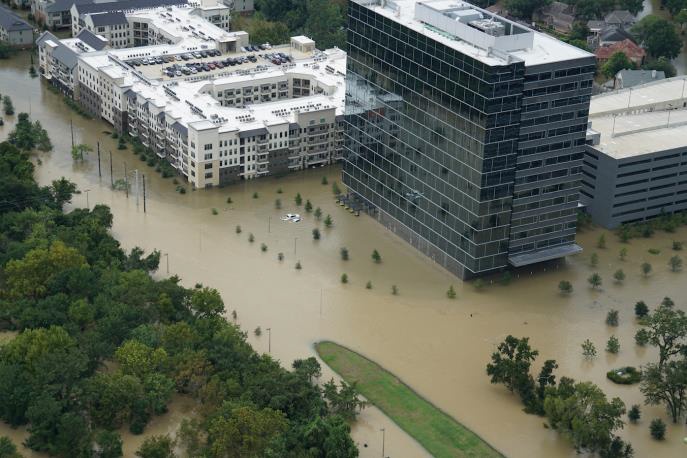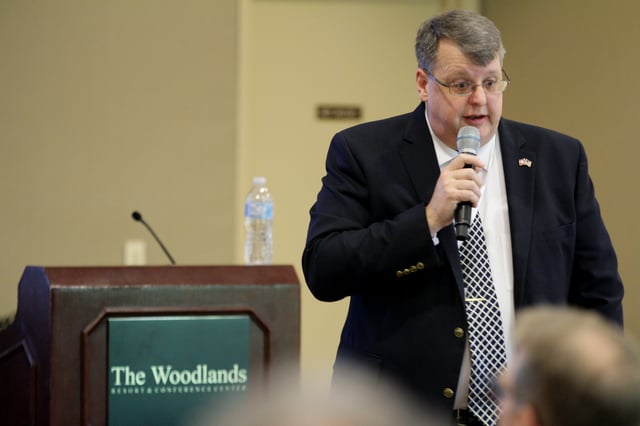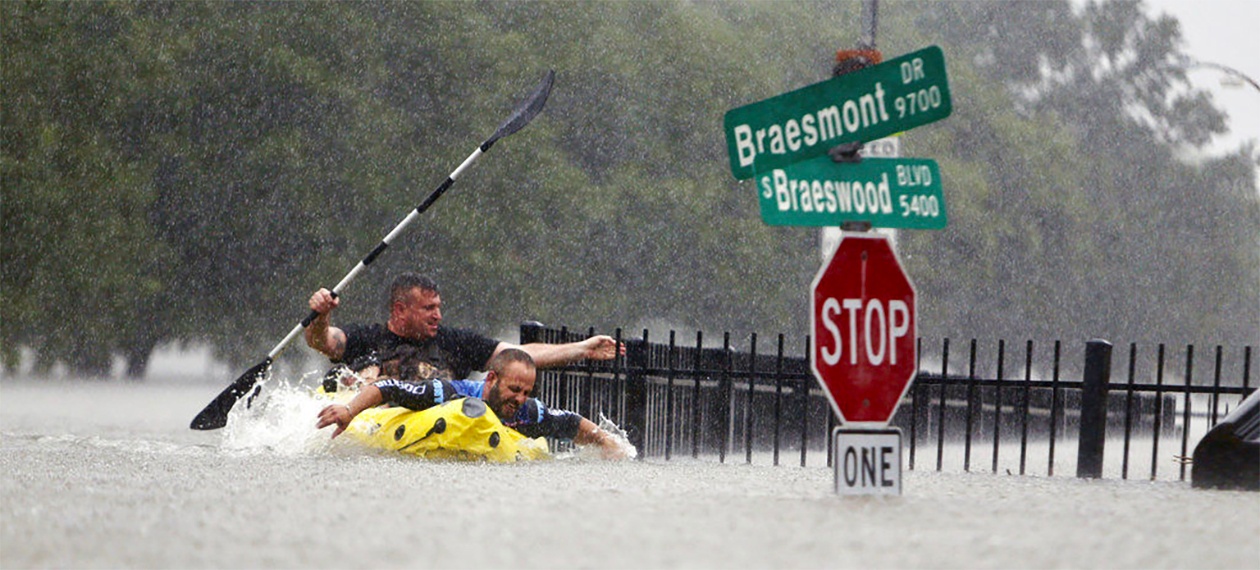Standing strong in the face of disaster is a challenge for any type of organization. But when it comes to educational institutions, that challenge is especially daunting. With so many students and faculty whose lives are primarily based on campus, universities have an increased responsibility to be prepared and keep people safe.
We got an inside look at how the University of Houston’s facilities leaders tackle storms in a co-presentation by Dave Oliver and Dave Irvin. Oliver is the current Associate Vice Chancellor/Associate Vice President for Facilities and Construction Management at University of Houston. Irvin formerly held the same post, but is now Associate Vice Chancellor for Facilities Services at University of Tennessee.
How Vulnerable is the UH Campus?
The University of Houston central campus totals over 14.5 million square feet and consists of more than 160 buildings. While much has been done to prepare for hurricanes, the campus is still quite vulnerable due to a few geographical and situational weaknesses.
Bray’s Bayou, one of Houston’s major floodways, runs just feet from the edge of the campus. If storm water spills over its borders, the campus starts flooding immediately. Complicating this problem is the fact that the urban campus has a flat topography. This leaves the grounds without much positive slope, which is essential for drainage.
Resident safety is also a major concern: over 40,000 students (plus staff) are forced to endure storms while on university grounds.
In terms of planning, the university does take robust measures. Most of UH’s facilities senior staff is trained in accordance with the National Incident Management System (NIMS). Oliver underlined that NIMS guidelines set the standard for emergency management principles, and recommends that all facilities teams use NIMS when facing their own emergencies.
Additional provisions include UH’s own emergency management plan and a specific hurricane planning guide. They also have a “Ride Out” team guide, which details how the team can ride out the storm on campus.
Facing Tropical Storm Allison
 The University of Houston suffered extensive damage from Tropical Storm Allison.
The University of Houston suffered extensive damage from Tropical Storm Allison.
Irvin came up to talk about his experience with Tropical Storm Allison, which he referred to as “trial by water”. The storm hit only a month after Irvin became the AVC/AVP, and being a native-Nebraskan, Irvin had no personal experience with hurricanes or tropical storms. Allison was poised to test his mettle.
Though the storm never became a hurricane, its impact was devastating. Allison was the deadliest tropical storm in U.S. history. It hit Houston four times in a span of two weeks, causing $8.5 billion in damage and leaving 41 people dead.
The university suffered extensive damage, with its main campus sustaining the worst of the storm. An estimated 32 trillion gallons of water was dumped on UH campuses, leading to significant water damage and a staggering roof-failure rate of 80%. Over $250 million in damage was done to 115 Buildings, 85% of them located on the main Campus.
Among the assets destroyed included the majority of HVAC equipment, over half a million books, valuable musical instruments, and rare manuscripts and works of art. The major campus IT Data and Communications Center was completely ruined, as well.
In facing the storm, Irvin’s priority was life and safety. He aimed to see through the ordeal with no related injuries to students, faculty, staff, or research animals. Fortunately, his team was successful in this goal. But they still had their work cut out for them when it came to campus recovery.
UH’s business plan required that the university be operational within two weeks following Allison. This was due to the need to generate revenue from summer school tuition, otherwise there wouldn’t be enough funds to fully recover and operate. Many measures were taken to achieve this target, including repurposing sports areas as classrooms and shifting many on-site staff positions to telecommuting ones.
No U.S. insurance company would insure the university after the damage that was wrought, which forced them to turn to Lloyd’s of London. However, LL would not re-Insure UH without a major future remediation plan. Irvin said this was actually a silver lining: “They forced us to do what we should have done to start with.”
UH spent over $75 million on remediation initially, and that number eventually rose to $150 million total. The remediation work was extensive, including relocation of critical functions and major construction replacements and upgrades. Additionally, they completely redesigned their facilities master plan based on emergency criteria.
Surviving Hurricane Harvey
Oliver took over to talk about his own experience in dealing with Harvey, the powerful category 4 hurricane that wreaked havoc in Texas just last year. The storm dropped 50 inches of rain in Houston, a record setting weather event.
As Oliver had taken over after Irvin, his team benefited from the past work done in the wake of Allison. Irvin’s remediation and emergency-focused master plan revision gave them solid ground to stand on.
There were improvements that greatly increased UH’s flood-readiness, such as storm doors, and an underground tunnel system that could provide drainage for the buildings. Oliver’s team also put heavy focus on preventative maintenance.
“If key infrastructure is poorly designed, broken, or poorly maintained, it will fail you in an emergency.”
Oliver described planning as being worth its weight in gold, but he emphasized that leaders should expect that things almost never go according to plan. When weathering Hurricane Harvey, his team had to adjust their plans as the situation changed, and in some cases, even formulate new ideas to action on the fly.
Here, Irvin chimed in on the importance of plan accessibility. Plans should not consist of multiple giant binders that are impossible to read and implement in the moment. They should be easily accessible both physically and digitally, and teams should be familiar with and ready to implement them before emergencies occur.
In the wake of Hurricane Harvey, Oliver’s team was ordered to have UH ready for classes within just six days. Remarkably, this was achieved, with 98% of all classrooms available upon the school’s reopening. Oliver attributed this success to following NIMS protocols, and ensuring that UH’s senior leaders were kept in the loop throughout the course of the hurricane and the recovery period that followed.
Lessons Learned
 Dave Oliver, AVC/AVP Facilities & Construction Management at University of Houston.
Dave Oliver, AVC/AVP Facilities & Construction Management at University of Houston.
Oliver and Irvin learned quite a bit from tackling these disasters, and shared a few key lessons that they felt are important for all facilities leaders to know.
Some of these key points included:
- Know the emergency plans of every university department. You should know what’s expected of your team during a disaster event, and doing this can help you identify and resolve unrealistic expectations.
- Enter into as many pre-existing contracts as possible. Establishing pre-emergency contracts early will ensure that you get payment and support from FEMA and the state as quickly as possible. Also aim for redundancy: don’t assume any one supplier will be available, have backups.
- Advocate for academic and research plans to emphasize online/telecommuting options. This will reduce the need for facilities to be up and running again ASAP for in-person classes.
- Take care of people first, especially your facilities team. In a time when everyone is stressed and low on energy, meals and praise go a long way. Make sure that refreshment carts are easily accessible and that you’re generous with your praise. Don’t forget that your team members are likely personally affected by the emergency, and therefore are dealing with their own troubles too.
- Eliminate what doesn’t work. After every basement at UH flooded, Oliver decided that no new basements will be built on campus. Don’t keep building or operating in a way that increases problems when disasters strike.
- Make sure your plans are made for realistic scenarios. UH’s “Ride Out” plan anticipated a 24-hour event, but Harvey lasted five days. Being too optimistic in your estimates of expected time, damages, or resources needed can create critical problems when those estimates are exceeded.
If you’d like to learn more about Oliver and Irvin’s strategies for disaster recovery & resilience, you can view their full presentation here.
For more on innovation in campus facilities, join us at the Higher Ed Facilities Forum, taking place April 7-9, 2019 in Hollywood, FL.

Posted by
Join us at HEFF!
An interactive retreat for facilities leaders at the nation's top colleges and universities.
Nov 8-10, 2026 | San Antonio, TX
Learn More









Comments